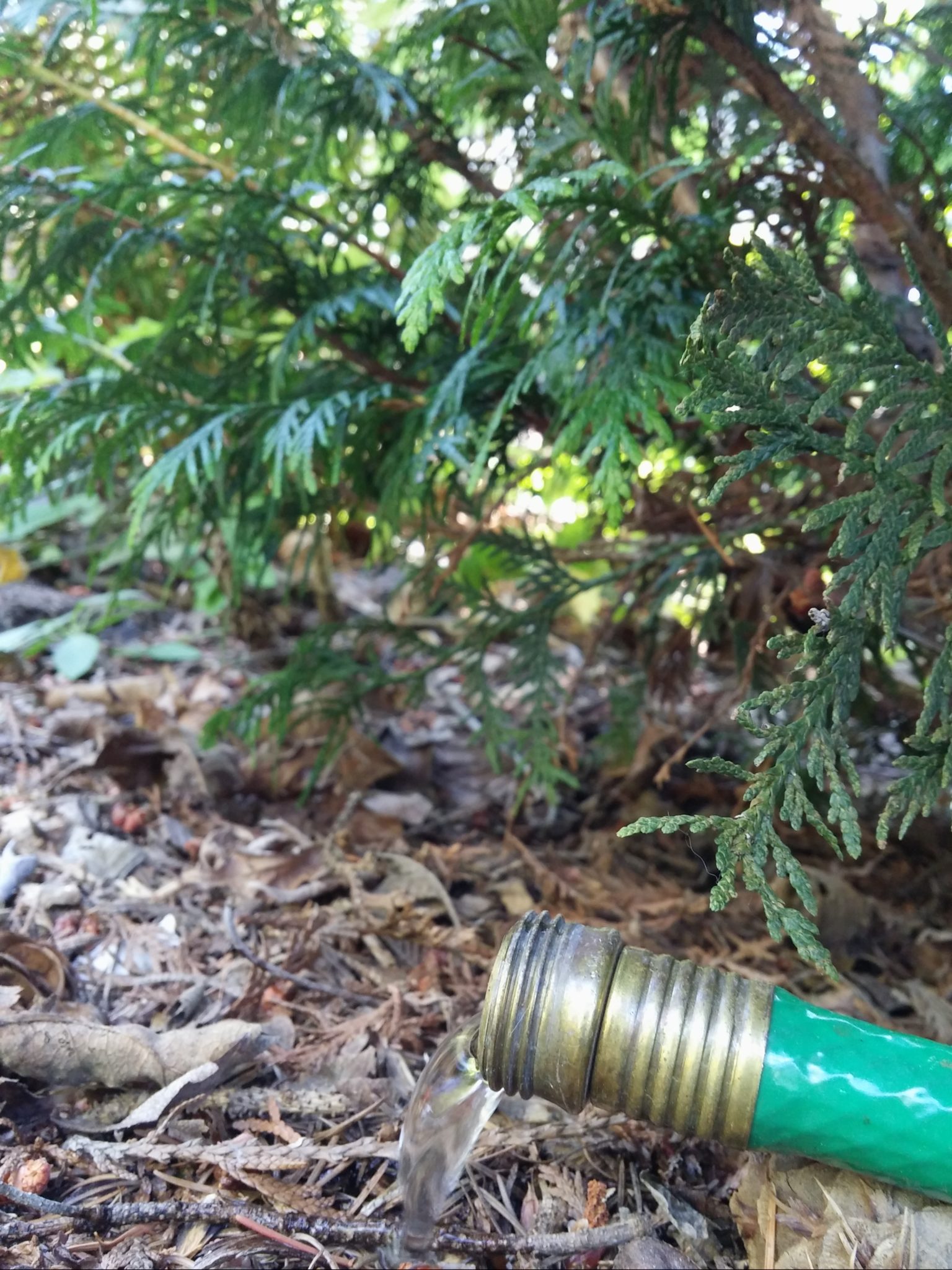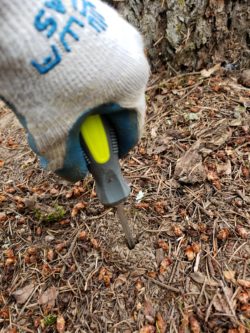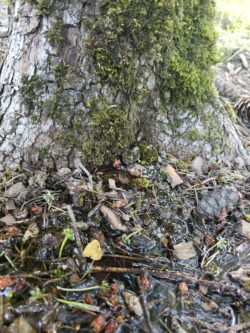
Do Not Overwater Your Trees
Our dry northwest summers motivate many urban gardeners to water their trees to excess. Overwatering is a common cause of urban tree decline. When excess water displaces oxygen in the root zone over long periods of saturation, the roots will suffocate and die. Determining the right amount of water, not too much or too little, for your established trees involves many factors.
Different Watering Needs For Different Trees
In our urban backyards, we often grow a variety of trees that have different watering needs. Most mature trees that are native to Oregon and that are planted in a species-appropriate planting site do not usually need supplemental summer watering except in very long periods of hot weather. The native Oregon white oak, for example, has a deep tap root that allows it to thrive during our dry summers. Non-native trees may need more supplemental summer water, depending on the species and the conditions of the planting site.
MORE water is needed by trees that are:
• Young (See our previous blog post for guidance on summer water needs for newly planted trees)
• Planted in sunny locations
• Planted in fast-draining soil
• Planted in a windy location
• Planted in a location that limits root growth
• Planted in a landscape with other plantings growing below it
LESS water is needed by trees that are:
• Well-established
• Native
• Shaded
• Protected from the wind
• Planted in an area without other plantings growing below it
Only Water When Necessary
Tree owners should monitor the weather to determine when a tree is likely to need extra water. The amount of rain and temperature will affect a tree’s supplemental water needs. Ideally, the entire root zone will drain after each watering so that the roots have access to oxygen between waterings. The most important rule to remember in watering trees is to only water when the tree needs it.

Monitoring how much water the tree is actually using by checking the soil moisture before watering is the key to preventing overwatering damage in the summer. If the surface of the root zone is dry, then push a hard object (like a screwdriver) into the root zone. If it is difficult to push in, then the root zone is dry and the tree may need water. If you have determined that supplemental water is necessary, follow our tree watering guidance in our previous blog post, “Preventing Drought Stress in Established Trees.” Our tree watering advice can also be seen in a recent Redfin blog article.

Diagnosing Overwatering
The tricky part of diagnosing overwatering is that often an overwatered tree looks similar to an underwatered tree. One of the symptoms of overwatering is yellowing leaves, just like in an underwatered tree. An underwatered tree may have wilting leaves with dry edges, unlike an overwatered tree, which may have fungus growing on the wet soil surface. The standing water at the base of the dogwood tree above will need to drain out of the root zone completely before it will need more water.
Signs of overwatering in trees:
• Yellowing leaves
• Fungus on soil surface
• Withering new leaves
Knowing the watering needs of your particular tree, monitoring weather, and watering only when necessary will help prevent damage caused by overwatering your trees.


